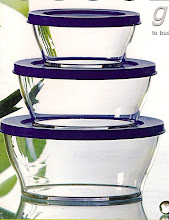ROOTS
Woody perennials such as trees usually have deep root systems. An example of such a tree is the Acacia tree. The roots of the younger plant are often longer than the shoot in order to seek out a water layer which the plant can then tap permanently. Hence such species are slow-growing above ground while they are becoming well-established below the surface.
Some plants like Cactus have short fibrous roots spread out on the surface to exploit moisture from dew and rain water on the surface of soil
Shoots
The short shoot, long root pattern is commonly in the ratio of 1 : 6. The shoot is usually hard and tough and may bear spines or prickles, perhaps as a deterrent to herbivores. An example is the Cactus plant.
Leaves
Leaf modification is one of the most visually-obvious examples of desert adaptation. Many salt-tolerant species found near the coasts and in inland depressions, bear leaves which are globular, or at least very fleshy in appearance. When squeezed these leaves produce water at any time of the year. The expansion of the outer leaf cells means that water can be stored for long periods, an obvious benefit during long, dry summers. These outer surfaces usually appear shiny because of the presence of a waxy cuticle designed to prevent water loss.
Some desert plants have very reduced leaves. In some species leaves are needle-like. A small leaf area means less surface exposure and therefore less risk of too much moisture loss. In plants which are virtually leafless, normal physiological processes such as photosynthesis are carried out by the stems.
Stems
These may be deeply grooved. The stomata in these grooves are unable to open widely, thus reducing the risk of over-loss of moisture. Some stems are joined at frequent intervals, particularly so on fleshy succulents. This lends extra support to the plant since such joints are usually quite rigid.
Stems and leaves may be covered with dense hairs, forming a micro-habitat which traps moisture and also acts as an insulator. Hairs are also unattractive to smaller herbivores. Numerous small spines may have a similar effect.
Flowers
The presence of conspicuous or miniscule flowers is largely determined by the pollination method adopted. Desert plants which flower in the summer or autumn are more likely to be wind-pollinated because of a relative lack of suitable insect agents at that time of year. There is thus no need for showy inflorescences.
Some desert species of plants in the sands and in the mountains bear large attractively-colored flowers. Needless to say, these species are insect pollinated.
Photosynthesis
Normal temperate region plants absorb carbon dioxide by day via the leaf stomata. Plants with a very strong resistance to arid conditions, however, do not conform to this pattern. In these plants there is a delay in the transfer of carbon dioxide, and hence the process of photosynthesis is delayed. Instead of opening by day, the stomata open by night when gas interchanges take place, and water is used much more efficiently. The absorbed carbon dioxide is temporarily stored overnight and then transfused through the plant during the day while the stomata are closed.
This chemical adaptation is interesting for it is a step beyond the normal physiological modifications to leaves, stems and roots, but it also restricts plants to their arid environments. Hence the difficulty of transplanting desert species to more nutritious soils in temperate regions of the world.
Conclusion
This short account does not attempt to give justice to the subject and a lot more work needs to be done with individual species in different parts of the country. Plants are supremely adaptable and have evolved mechanisms of survival over an extremely long period.
